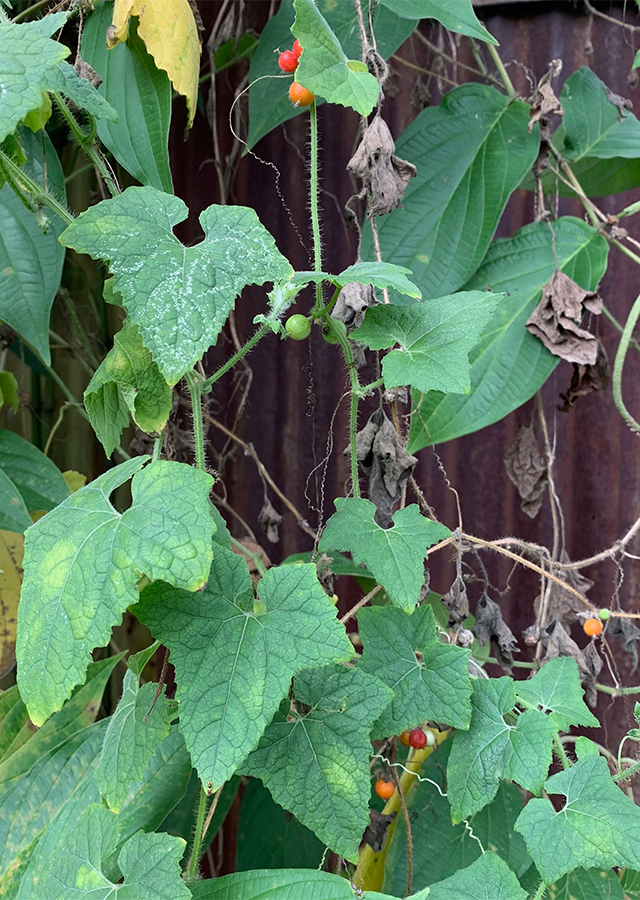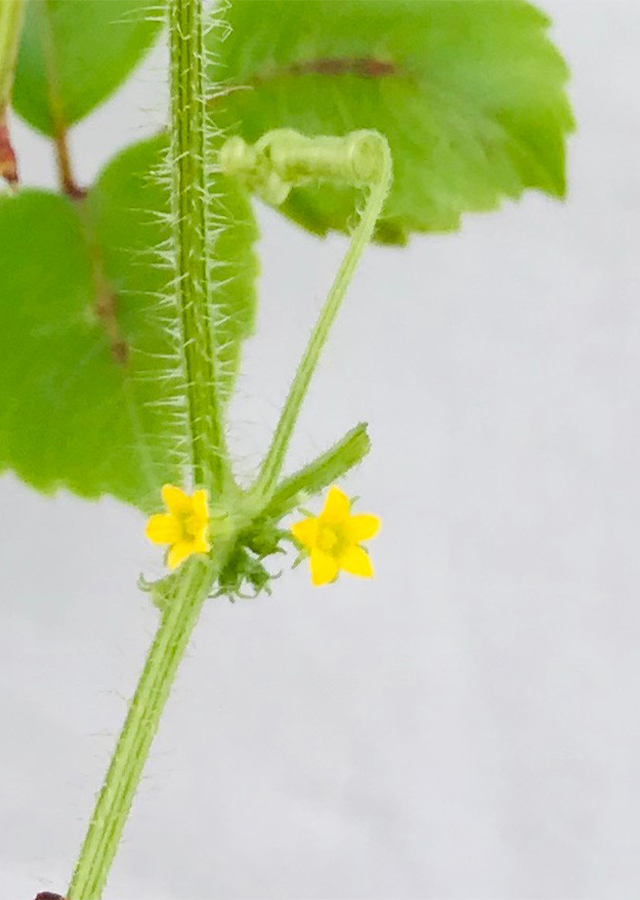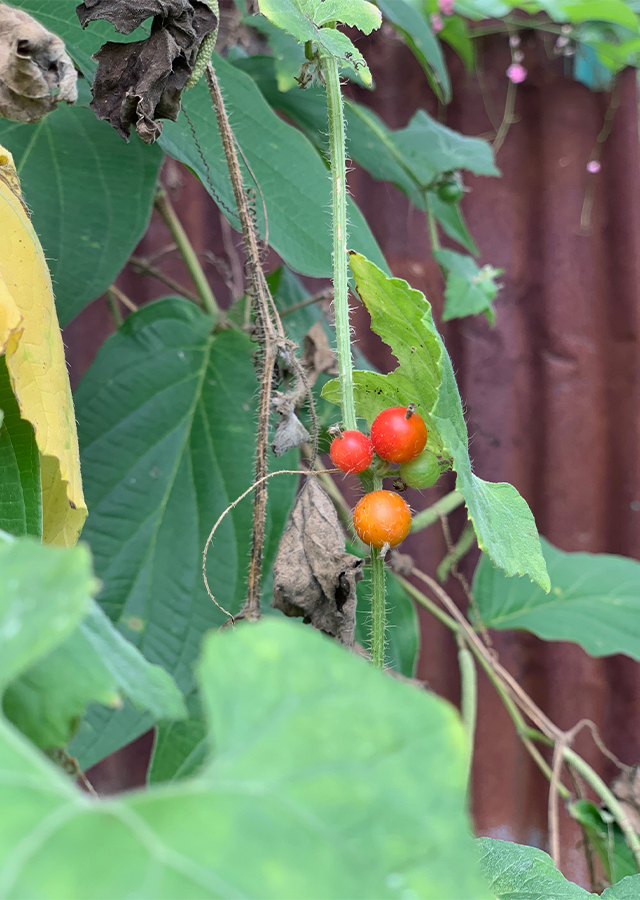Rough Bryony
Cucumis maderaspatanus L.
Cucurbitaceae
Location in our garden
Beneficial Weed



Synonym
Mukia maderaspatana (L.) M.Roem.
Bryonia cordifolia L.
Bryonia gracilis Wall.
Habitus
Climbers. An annual scandant or trailing herb that grows up to 4 m long
Part Used
Leaves
Seeds
Fruit
Roots
Sap
The Whole Plant
Young Shoot
Growing Requirements
Full Sunshine
Habitat
Riverbanks
Forest
Grassland
Overview
Rough bryony is native to tropical Africa and South Africa, Madagascar and the Mascarene Is., also tropical Asia, Malesia and Australasia. It is an edible plant typically low in calories, low in fat, high in dietary fibre, high in iron and calcium and very high in phytochemicals. Tender shoots and leaves are used as the part of South Indian cuisine.
Vernacular Names
Hong gua (Chinese), Agumaki (Hindi), Taeng nok (Thai), Sango ju suzume uri (Japanese), Kobion (West Africa), Melon-gubat (Tagalog-Philippines).
Agroecology
This plant's habitat is in the open, not forested, localities; flood-plain and valley grasslands, riverine margins and damper places in woodland and wooded grasslands at elevations of 300-1,250 m.
Morphology
- Stem - climbing, long, slender, much-branched, angular, and covered with spreading, bristly hairs, with the young parts densely covered with white hairs.
- Leaves - ovate-deltoid measuring 4-8 x 3-7 cm, angular or shallowly 3-5 lobed, margin denticulate, base cordate, apex acuminate, scabrid on both sides. Petioles are 6 cm.
- Flowers - yellow and very small, the males occurring in fascicles and the females, singly. Calyx is hairy, with linear segments. Petals are ovate, and only about 2 mm long.
- Fruits - a berry, scarlet when ripe, rounded, 10 to 12 mm in diameter, and furnished with a few scattered hairs.
- Seeds - closely packed, ovoid, oblong, whitish or pale brown, about 4 mm long, and compressed in the pulp.
Cultivation
Propagation is by seeds.
Chemical Constituents
Dichloroacetic acid, 4-methylpentyl ester, 2-butyn-1-ol, 4-methoxy, flavonoids, saponins, steroids, tannins, phenolic, terpenoids, cardiac glycerides, pantolactone compounds, eugenol, amino acid, linoleic, oleic, palmitic acid.
Traditional Medicinal Uses
Medicinal Uses
- This plant is sudorific, anti-flatulence, laxative.
- The seeds are diaphoretic.
- The plants are considered hypolipidemic, hypotensive, hypoglycaemic, hepatoprotective, immunomodulatory, antiulcer, antimicrobial, local anaesthetic and anxiolytic.
Traditional Uses
- A decoction of young shoots and leaves is used as an aperient, especially for children, and is also taken to treat vertigo and biliousness.
- The sap is given to small children in the treatment of amoebiasis.
- The leaf-sap is used as a wound-dressing.
- A poultice of the leaves is used in the treatment of burns. The dried, powdered leaves are dusted over scabies.
- The ash of the plant is mixed in castor oil and rubbed over scarifications and the temples to relieve for headache.The seeds are chewed to cause perspiration. The fruit is used as a vermifuge. The root is chewed to relieve facial neuralgia, toothache. A decoction is used in the treatment of flatulence.
Part Used
Reference Sources
- Fern, Ken. (2014). Useful Tropical Plants. Cucumis maderaspatanus. http://tropical.theferns.info/viewtropical.php?id=Cucumis+maderaspatanus 08-02-2021
- Health & Benefits Times. (No date). Pea Pumpkin. Mukia maderaspatana. https://www.healthbenefitstimes.com/pea-pumpkin/. 29-04-2021.
- Stuart Xchange. (2015). Philippines Medicinal Plants. Melon-gubat. http://www.stuartxchange.com/Melon-gubat.html. 08-02-2021.
- UKEssays. (2018). Mukia Maderaspatana Antioxidant Properties. Retrieved from https://www.ukessays.com/essays/biology/antioxidant-properties-from-different-parts-of-mukia-maderaspatana-biology-essay.php?vref=1 . 08-02-2021.


